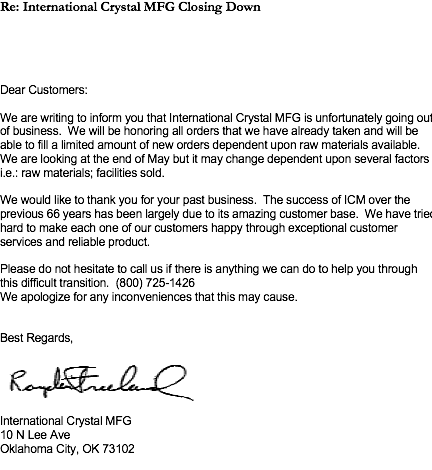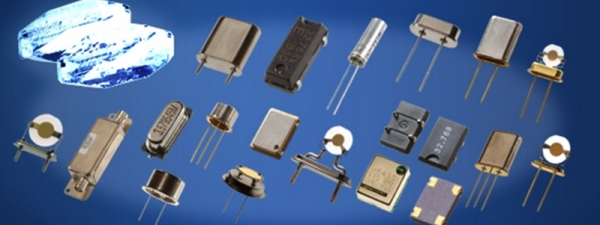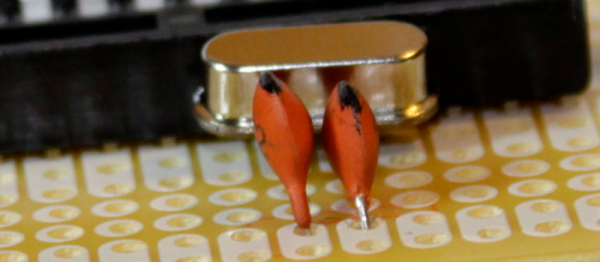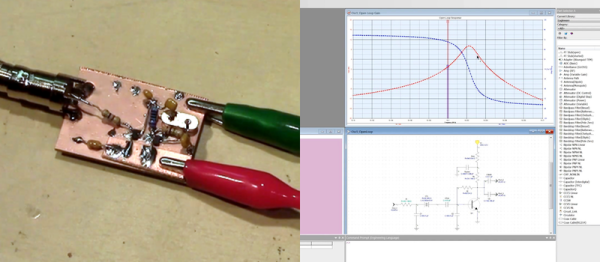There was a time when anyone involved with radio transmitting — ham operators, CB’ers, scanner enthusiasts, or remote control model fans — had a collection of crystals. Before frequency synthesis, became popular, this was the best way to set an accurate frequency. At one time, these were commonly available, and there were many places to order custom cut crystals.
One of the best-known US manufacturers of quartz crystals still around is International Crystal Manufacturing (ICM). Well, that is, until now. ICM recently announced they were ceasing operations after 66 years. They expect to completely shut down by May.
 In a letter on their website, Royden Freeland Jr. (the founder’s son), committed to fulfilling existing orders and possibly taking some new orders, raw materials permitting. The company started making products out of Freeland’s father’s garage in 1950.
In a letter on their website, Royden Freeland Jr. (the founder’s son), committed to fulfilling existing orders and possibly taking some new orders, raw materials permitting. The company started making products out of Freeland’s father’s garage in 1950.
Another big name that might still be around is Jan Crystals. We say might, because although their website is live, there’s not much there and the phone number is not quite disconnected but it is “parked.” There are also some posts on the Internet (where everything is true) indicating they are out of business.
Even if you didn’t do radio work, crystals are a staple in digital systems where an accurate clock is necessary and some types of filters, too. Of course, you can still get them, you just may not be able to get them made in the United States soon.
If you want to know more about the technology behind crystals [Jenny] has you covered. Crystals are one of those things that have not changed much in a long time, so you might enjoy the very 1960’s vintage U. S. Air Force training film below.

















